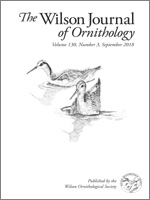Extreme climatic events can often lead to intense selection and serve as catalysts for rapid evolutionary change. Cold and rainy weather during a 6-day period in spring 1996 led to massive mortality of Cliff Swallows (Petrochelidon pyrrhonota) in western Nebraska and selected for birds with shorter wings and tails, larger skeletal traits, lower levels of fluctuating asymmetry, and less phenotypic variance in all traits. Here we investigate whether the same patterns of selection occurred during 2 subsequent cold and rainy weather events in this population in 2004 and 2017. Directional selection on morphological traits in 2004 was generally the same as in 1996, but in 2017 selection on tarsus length and outer tail feather length was in the opposite direction. As in 1996, selection during both events reduced phenotypic variance in most traits. The results illustrate the potential for extreme weather events to act as drivers for fluctuating directional selection on morphological traits and for periodically removing phenotypic outliers.
How to translate text using browser tools
1 September 2018
Changing patterns of natural selection on morphology of Cliff Swallows during severe weather
Charles R. Brown,
Mary Bomberger Brown,
Stacey L. Hannebaum,
Patricia K. Hosack,
Abigail J. Kucera,
Catherine E. Page,
Stephanie A. Strickler,
Gigi S. Wagnon
ACCESS THE FULL ARTICLE
Cliff Swallow
extreme climatic events
morphology
NATURAL SELECTION
Petrochelidon pyrrhonota
rapid evolution






